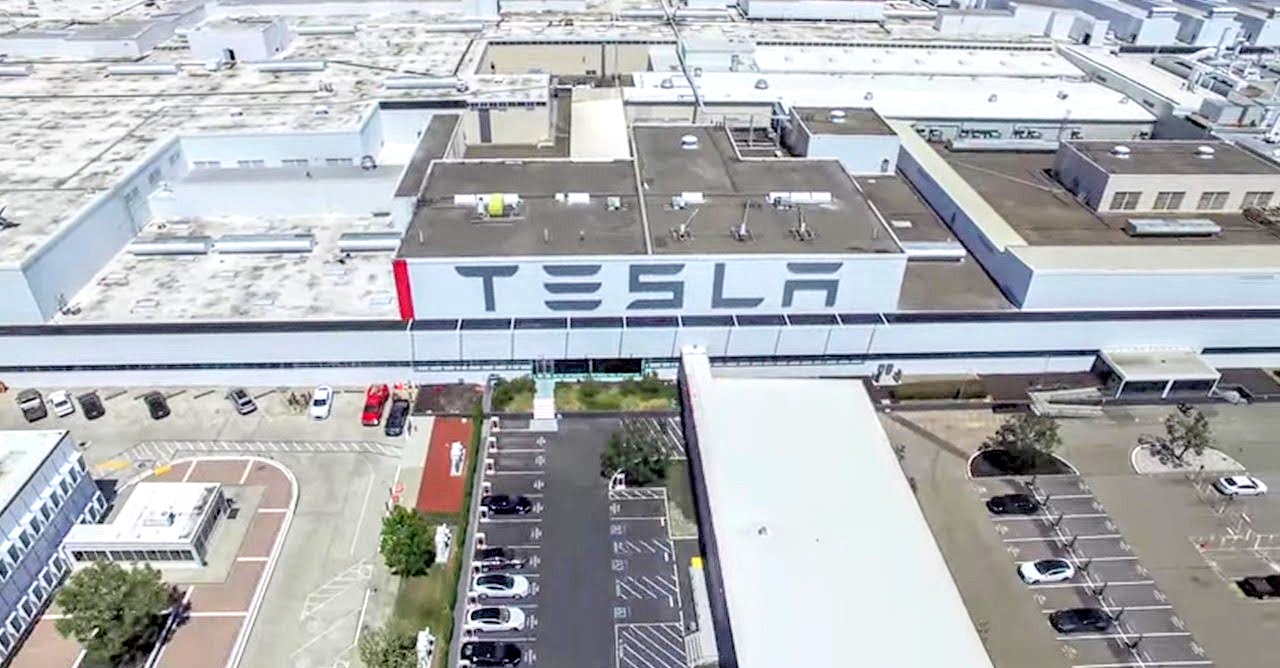The second video in the Elon Musk interview series with Youtuber Marques Brownlee – more popularly known to his fans as MKBHD – shows Musk taking Brownlee on a walk-around through the various General Assembly and sub-assembly processes at the Fremont factory in California. No earth-shattering information came out of it, unfortunately, but it did give everyone a glimpse of how things work at the facility and what efforts are underway to increase production efficiency.
Here are some tidbits we picked up from the video. Hope you enjoy them:
-
The hard hats that Tesla uses at this factory are the culmination of a long line of iterations used before them. The new ones are baseball cap style bump caps. Not unique to Tesla but definitely very Tesla.
-
After struggling with ‘hyper-automation’ issues, Tesla seems to have found the ideal mix between manual input and automated processes, as the video shows. Musk says some processes are more efficient when people do it because there are so many variables, such as snaking a cable through the car’s shell or taking something out of a box that may be oriented differently each time. Things that Musk refers to as “complicated and fiddly.” Technical terms, to be sure.
-
Musk talks about creating even more efficiencies, and maybe doing certain things over that would make more sense. Tesla is still on the manufacturing learning curve, unlike other major automakers who’ve been doing this for decades. That comes out in the interview.
-
Musk also mentions how slow the cars move down the assembly line, and talks about speeding things up there, implying that production time will keep getting cut incrementally when they do that. He also noted that the Model 3 assembly line was faster, somewhere near a mile an hour. Later on in the walk-through, Musk focuses heavily on a few of the thousands of processes that can be improved, and he seems to be obsessed with finding efficiencies in the smallest things, like increasing the speed settings on a bolt driver. No, not a person driving a Chevy Bolt; a machine that drives bolts into place.
-
As of 2018, there are about 10,000 people working at the Fremont factory, which is double what they had before. The 9% workforce cut that Tesla announced earlier this year has not affected this facility, as mentioned in an email from Musk to his employees at the time. With Model 3 production on the rise, I guess it’s all hands on deck for the foreseeable future.
-
Musk talks about the challenges of getting 10,000 people to the factory every day and mentioned a variety of commute options including ride-sharing, shuttles, and the BART (Bay Area Rapid Transit) Warm Springs/South Fremont station that opened last year after being delayed for three years.
-
Many of the robots have custom components and programming, where the base product is a catalog item but with significant customization. Oh, and they’re all named after Marvel characters and X-Men.
-
Black is apparently the most popular Tesla EV color, more so in Europe than in the U.S. White is the second most popular color, but very rare in Europe, according to Musk.
-
Musk also showed the “mating station” where the battery pack meets the car, highlighting the combination of manual and automatic input from humans and robots, respectively. So people and machines can work together, after all.
-
When asked about a matte finish, Musk said he liked it but that it was a lot trickier to repair or re-finish than a gloss finish. Doesn’t look like we’ll get a matte-finish Tesla any time soon, because he clearly said the paint shop was operating at full capacity and adding any complexity was not on the table for now. In the future, maybe.
-
The only place where the Model 3 and S and X come together is the paint shop. We know this because the 3 is the first to be built on the third-generation platform, which is more efficient.
It’s clear that Tesla is still in the process-refining stage at both the Gigafactory and the Fremont facility, and rightfully so. Any efficiencies they can manage to squeeze out of their manufacturing and other processes will help increase production and bring Tesla that much closer to being profitable.
This is a crucial quarter because Q3-18 is when Musk said he wants Tesla, Inc. to start being consistently profitable moving forward. We’re already past the first half of the quarter but we don’t know the numbers yet. The only thing that can make Tesla profitable in Q3 is a combination of operational efficiencies and an increase in Model deliveries. A lot has already been done on the operations side of things, and we’re confident that Tesla will beat its own estimates of 50,000 to 55,000 deliveries for this quarter if VIN registrations are anything to go by. Here’s where we discuss this in a recent article.
Here’s the full Fremont factory walkthrough as published on YouTube.



